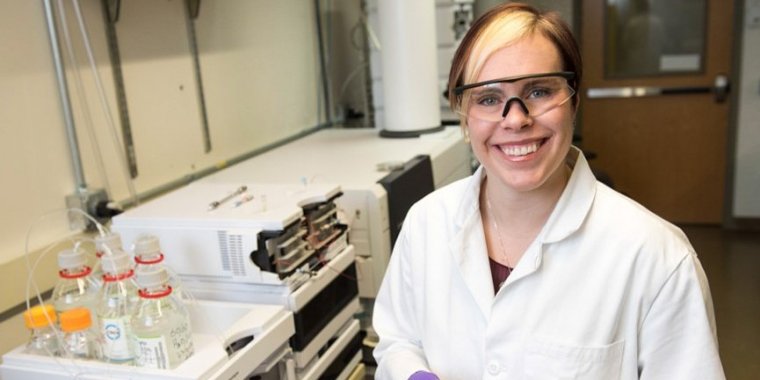| News / Science News |
Nanoparticles may have bigger impact on the environment than previously thought
Over the last two decades, nanotechnology has improved many everyday products, from microelectronics to sunscreens. Nanoparticles (particles just a few hundred atoms in size) are ending up in the environment by the ton, but scientists are still unclear about the long-term effects of these super-small particles.

Chemist Erin Carlson led research showing that nanoparticles can cause resistance in bacteria. Photo: Patrick O'Leary, University of Minnesota
In a first-of-its-kind study, researchers have shown that nanoparticles may have a bigger impact on the environment than previously thought.
Researchers at the University of Minnesota, through the National Science Foundation Center for Sustainable Nanotechnology, found that a common, non-disease-causing bacterium in the environment, Shewanella oneidensis MR-1, developed rapid resistance when repeatedly exposed to nanoparticles used in making lithium ion batteries, the rechargeable batteries used in portable electronics and electric vehicles.
The resistance means that the fundamental biochemistry and biology of the bacteria are changing.
The results of the study are unusual, the researchers say. Bacterial resistance usually occurs because bacteria become resistant to attempts to kill them. In this case, the nanoparticles used in lithium ion batteries were not intended to kill bacteria.
This is the first report of non-antibacterial nanoparticles causing resistance in bacteria.
Bacteria are prevalent in lakes and soil where there is a delicate balance of organisms. Other organisms feed on the microbes, and the resistant bacteria could have effects scientists can't yet predict.
This work reveals the unexplored and long-term impacts some nanoparticles have on the living organisms around us.
This discovery at the chemistry-biology interface is a first step toward developing new sustainable materials and practices and providing the groundwork for possible remediation approaches. (National Science Foundation)
YOU MAY ALSO LIKE





